Various 3D media all work by giving the illusion of depth by presenting offset images
separately to each eye. The human brain then combines these images to form a 3D image.
Techniques for achieving this include glasses to combine two images, glasses which
filter offset images from a single source or to have the light source split so that
each eye sees a different offset image.
Separate Images:
This technique used two different images, each shown to one eye to achieve stereoscopy.
This technique was invented y Sir Charles Wheatstone in 1838. This has been used
in early 3D picture cards, penny arcade machines, Viewmaster toys and world war two
surveillance pictures. The viewers used are normally designed for one person to view
the image at a time. The advantages are:
Using positive curvature (magnifying) lenses, the focus point of the image is changed
from its short distance (about 30 to 40 cm) to a virtual distance at infinity. This
allows the focus of the eyes to be consistent with the parallel lines of sight, greatly
reducing eye strain.
The card image is magnified, offering a wider field of view and the ability to examine
the detail of the photograph.
The viewer provides a partition between the images, avoiding a potential distraction
to the user.
Disadvantages of stereo cards, slides or any other hard copy or print are that generally
only one person at a time can view the media and the two images are likely to receive
differing wear, scratches and other decay. These result in stereo artefacts when
the images are viewed which compete in the mind resulting in a distraction from the
3d effect, eye strain and headaches. Because of these disadvantages, this system
is not widely used.
Some side-by-side viewing devices
Filtered Offset Images:
This technique relies on the separation of two images superimposed on top of each
other. This is done using colour (anaglyphs and Dolby 3D), polarized light (RealD
and Imax 3D) or by using synchronized shutters (Active 3D).
Anaglyphs:
This technique uses colour layers which are filtered using coloured glasses. Anaglyph
images are made up of an image in one colour for one eye overlaid with an offset
image in another colour for the other eye. For example to produce a red/blue picture,
two cameras shoot a scene simultaneously. They can either have a red filter, and
a cyan filter, or the green and blue can be removed from the left picture and the
red from the right picture. The two pictures are then superimposed to produce the
anaglyph image. When viewed through red-cyan anaglyph glasses, the red blue and green
light appears dark in the left eye and the red lens over the left eye allows only
the red part of the anaglyph image through to that eye, while the cyan (blue/green)
lens over the right eye allows only the blue and green parts of the image through
to that eye. Portions of the image that are red will appear dark through the cyan
filter, while portions of colours composed only of green and blue will appear dark
through the red filter. Each eye therefore sees only the perspective it is supposed
to see. The brain then stitches the two images together to form a 3D image.
A red/cyan anaglyph picture, taken outside my spare room in Carterton, UK.
This technique was first developed in 1853 by Wilhelm Rollmann in Leipzig who used
red and blue lines on a black background to produce 3D images viewable using red
and blue glasses. In 1858 Joseph D’Almeida produced an anaglyph magic lantern show
using red and green filters and the audience wearing red and green goggles. The first
printed anaglyphs were produced in 1891 by Louis Ducas Hauron by printing two negatives
on the same paper, on in red and one in either green or blue. The first anaglyph
film was presented on June 10th, 1915 by Edwin S. Porter and William E. Waddell in
the Astor Theatre in New York using red-green glasses. It consisted of three reels
of films showing rural scenes, test shots of Marie Doro, a segment of John Mason
playing a number of passages from Jim the Penman (a film released by Famous Players-Lasky
that year, but not in 3-D), Oriental dancers, and a reel of footage of Niagara Falls.
The first commercially produced anaglyph films was The Power of Love, which premiered
at the Ambassador Hotel Theatre in Los Angeles on September 27, 1922. Further films
were produced in the early 1920s, but fell out of fashion in the late 20’s. 3D films
made a comeback in the early 1950s, but by this time the polaroid filters had become
popular, although many were also release as anaglyph as this required only one projector
whereas the polaroid required two. Anaglyphs were also used in comic books which
used disposable cardboard glasses.
A second wave of anaglyph movies occurred in the early 1980s with such films as Jaws
3D, , Amityville 3D and Friday 13th Part III. Anaglyphs also have the advantage that
they can be shown on any colour TV and in the 1980s some 3D films were shown as anaglyphs.
Since then, polaroid systems have largely taken over the 3D format in cinemas and
traditional anaglyph pictures and movies can be found in places such as children’s
comics and books, molecular modelling software and on the internet. An exception
to this is the Dolby 3D and Infitec systems. These use red, green and blue light
of different frequencies for each eye. This makes it possible to have full colour
images shown to each eye and the quality is comparable to the polaroid systems in
terms of picture quality.
The colours schemes used are given below. Most use one of the six possible combinations
of colours possible for pure anaglyphs: red-green, red-blue, green-blue (extremely
rare), red-cyan (most common), green-magenta or blue-yellow. These all depend on
not allowing light of the same colour into both eyes, which would cause ‘ghosting’.
Some later propriety technique deliberately allow some ghosting to occur as this
supposedly makes the image more pleasant to view, but they are all based on the six
basic combinations. In the cases of lighter colours being paired with darker ones
(e.g. red-cyan, red-green or especially yellow-blue), the lighter colour may need
to be darkened, both to allow both eyes to work equally and to avoid introducing
a possibly undesired Pulfrich effect (a psychophysical percept wherein lateral motion
of an object in the field of view is interpreted by the visual cortex as having a
depth component, due to a relative difference in signal timings between the two eyes).
A more advanced form of anaglyphs is wavelength multiplex visualisation, also known
as super-anaglyph. This uses 6 narrow bands of the visible spectrum, 2 red, 2 green
and 2 blue. Two images are overlaid with the right eye seeing bands of red, green
and blue light of slightly shorter wavelength than the three bands seen by the left
eye. The viewer wears glasses which filter out either set of wavelengths giving the
viewer a fully colour 3D image. This system is used by the Dolby 3D system and the
Infitec Dualcolor3D.
Polaroid Systems:
Polaroid systems work by exploiting the polarisation of light to achieve the 3D effect.
This is achieved by projecting two images superimposed over each other, each image
having a different polarisation. The Viewers wear glasses which contain polarised
filter which blocks the unwanted image from each eye. Two types of polarised system
exist, linear and circular. The main advantage of polarisation system is that full
colour is retained for both eyes.
Linear polarised systems
This is the original system, developed in 1936 by Edwin H. Land. This technique was
used in the first 3D boom in the early 1950’s and is still used in Imax cinemas.
Two images are projected superimposed onto the screen through orthogonal polarising
filters, usually at 45º and 135º. The glasses worn by the viewers also contain a
pair of orthogonal polarising filters oriented the same as the projected images.
Since each filter only allows light similarly polarised through, each eye only sees
one of the two superimposed images. The main disadvantage of this technique is that
the viewer must keep their head still otherwise the unwanted image will bleed into
the other image causing ghosting. This can make prolonged viewing uncomfortable.
Circular Polarised Systems
This method uses clockwise and anticlockwise circular polarised light to achieve
the same effect as linear polarisation. It has the advantage that tilting the viewer’s
head does not cause the images to bleed into each other.
Light consists of two perpendicular waves, one magnetic and the other electric as
illustrated.
Circularly polarized light consists of two perpendicular electromagnetic plane waves
of equal amplitude and 90° difference in phase. The light illustrated is right- circularly
polarized.
If light is composed of two plane waves of equal amplitude but differing in phase
by 90°, then the light is said to be circularly polarized. If you could see the tip
of the electric field vector, it would appear to be moving in a circle as it approached
you. If while looking at the source, the electric vector of the light coming toward
you appears to be rotating anticlockwise, the light is said to be right-circularly
polarized. If clockwise, then it is left-circularly polarized light. The electric
field vector makes one complete revolution as the light advances one wavelength toward
you. Another way of saying it is that if the thumb of your right hand were pointing
in the direction of propagation of the light, the electric vector would be rotating
in the direction of your fingers.
Circularly polarized light may be produced by passing linearly polarized light through
a quarter-wave plate (plate of material which has a different index of refraction)
with a refraction angle of 45° to the optic axis of the plate.
The RealD system use clockwise for the right eye and anticlockwise for the left and,
in the UK, is the most common type of 3D projection. The glasses have opposite polarised
lenses so that each eye sees only its designated image, even if the head is tilted.
The images are projected onto a silver screen which preservers the polarisation.
Active 3D Displays
This technique uses a shutter system which is synchronised with the display so that
each eye sees a different image and is mainly used in 3D televisions. Liquid crystal
shutter glasses most commonly used in these displays was invented in the mid 1970’s.
The prototype had the LCDs mounted to a small cardboard box using duct tape. The
glasses were never commercialized due to ghosting, but E&S was a very early adopter
of third-party glasses such as the StereoGraphics CrystalEyes in the mid-1980s. This
technology was most used at first for the computer and console games in the 1980s.
In 1982 the Sega arcade game, SubRoc-3 came with a viewer with spinning discs to
alternate the left and right images. Sega also produced active 3D glasses for the
Sega Master System. In the late 90’s several companies produced active 3D glasses
for using with Windows PCs. These all worked with CRT monitors and became redundant
in the early 2000’s when CRT monitors were replaced with LCD ones. It was not until
the late 2000’s that 3DTVs started appearing. Until recently these were all active
3D displays and require active 3D glasses with LCD shutters (a few passive displays
are now available such as LG’s 47LD950 Passive 3DTV). It is also used in some cinemas
with the XpanD 3D system. This has been installed in only about 3500 cinemas worldwide.
It is not very common as the glasses cost about 50-100 times the cost for the polarised
glasses used by RealD.
Autostereoscopy is any method of displaying 3D images without the need for 3D glasses
or other viewers. Because glasses are not needed, it is also called “glasses-free
3D” or “glasses-less 3D”. The approaches used to achieve this include parallax barrier,
lenticular, volumetric, electro-holographic and light field displays, with the former
two being the main techniques.
A parallax barrier consists of a barrier which has a series of slits cut out is placed
in front of the display, LCD being the most common displayed used. At one of the
correct viewing angles the holes allows the light from one image to be seen by one
eye and the light from the other image is seen by the other eye. The barriers block
the light from each of the images from being seen by the other eye. This is illustrated
below.
This method is used in a navigation system installed in the 2010-model Range Rover
which allows the driver to view GPS directions whilst the passenger watches a movie.
It is also used in the Nintendo 3DS hand-held console, LG’s Optimus 3D smartphone
and a Toshiba 21-inch 3DTV. The latter has 9 pairs of images to cover a viewing angle
of 30º.
Lenticular Lens
A lenticular lens is an array of magnifying lenses, designed so that when viewed
from slightly different angles, different images are magnified. The most common example
is the lenses used in lenticular printing, where the technology is used to give an
illusion of depth, or to make images that appear to change or move as the image is
viewed from different angles. This is mainly used for printed images, but is also
used for projected TV systems and glass-free 3D TV.
Lenticular printing is a multi-step process consisting of creating a lenticular image
from at least two existing images, and combining it with a lenticular lens. This
process can be used to create various frames of animation (for a motion effect),
offsetting the various layers at different increments (for a 3d effect), or simply
to show a set of alternate images which may appear to transform into each other.
There are three distinct types of lenticular print, distinguished by how great a
change in angle of view is required to change the image:
Transforming prints
Here two or more very different pictures are used, and the lenses are designed to
require a relatively large change in angle of view to switch from one image to another.
This allows viewers to easily see the original images, since small movements cause
no change. Larger movement of the viewer or the print causes the image to flip from
one image to another. (The "flip effect".)
Animated prints
Here the distance between different angles of view is "medium", so that while both
eyes usually see the same picture, moving a little bit switches to the next picture
in the series. Usually many sequential images would be used, with only small differences
between each image and the next. This can be used to create an image that moves ("motion
effect"), or can create a "zoom" or "morph" effect, in which part of the image expands
in size or changes shape as the angle of view changes. The movie poster of the film
Species II, shown in this article, is an example of this technique.
Stereoscopic effects
Here the change in viewing angle needed to change images is small, so that each eye
sees a slightly different view. This creates a 3D effect without requiring special
glasses.
Lenticular lenses are used to produce a bright picture on projected TV screens. It
is not used in this way for 3D projected television. It is used in some glasses-free
3D TV such as TCL’s 42” LCD model – the TD-42F – available in China for $20 000.
Comparison between Parallax Barrier and Lenticular lenses
|
Technique
|
Advantages
|
Disadvantages
|
Uses
|
|
Side-by-Side
|
Full colour image
Full brightness
Reduced Eyestrain
|
Only one person can see image at a time
Differing wear can distort 3D
|
Stereographic postcards
Aerial photo reconnaissance
|
|
Anaglyphs
|
Cheap
Simple
Lightweight glasses
|
Colour appears distorted
|
Comics and children’s books
3D films on the internet
|
|
Wavelength Multiplex Visualisation
|
Full colour
Brighter than other 3D systems
Expensive silver screens not needed
|
Glasses more expensive and fragile than polarisation techniques
|
3D cinemas (Dolby 3D and Infitec Dualcolor3D)
|
|
Linear Polarisation
|
Cheap glasses
Lightweight glasses
Full colour images
|
Ghosting can occur if views head is tilted
Reduced image brightness
|
3D cinemas (Imax 3D
|
|
Circular Polarisation
|
Cheap glasses
Lightweight glasses
Full colour images
Reduced resolution (for TVs)
|
Incorrect parallax can occur if head is tilted
Reduced image brightness
|
3D cinemas (RealD)
Passive 3DTV (LG’s 47LD950 3DTV)
|
|
Active 3D
|
Full high definition image (for 3DTV)
Lower cost 3DTVs
|
Expensive glasses
Heavy glasses
Complicated glasses
Reduced refresh rate (for 3DTV)
Image can seem to flicker by some people
|
3DTV
Cinemas (XpanD 3D)
|
|
Autostereoscopy
|
Glasses free
|
Limited viewing angle
Multiple views can be jarring when moving from one view to the next
|
3D posters
Heldheld 3D displays (Nintendo 3DS)
|

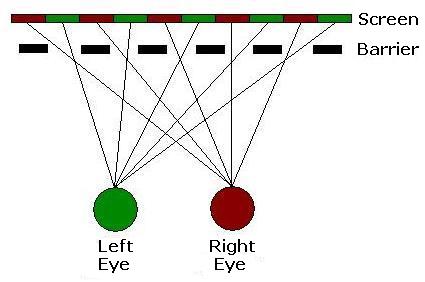
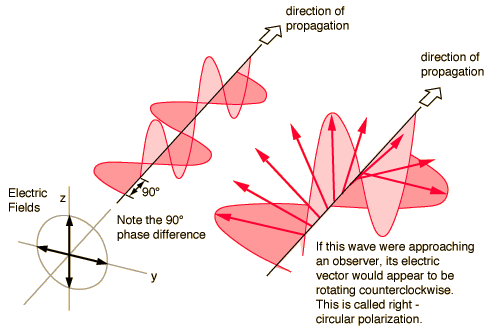


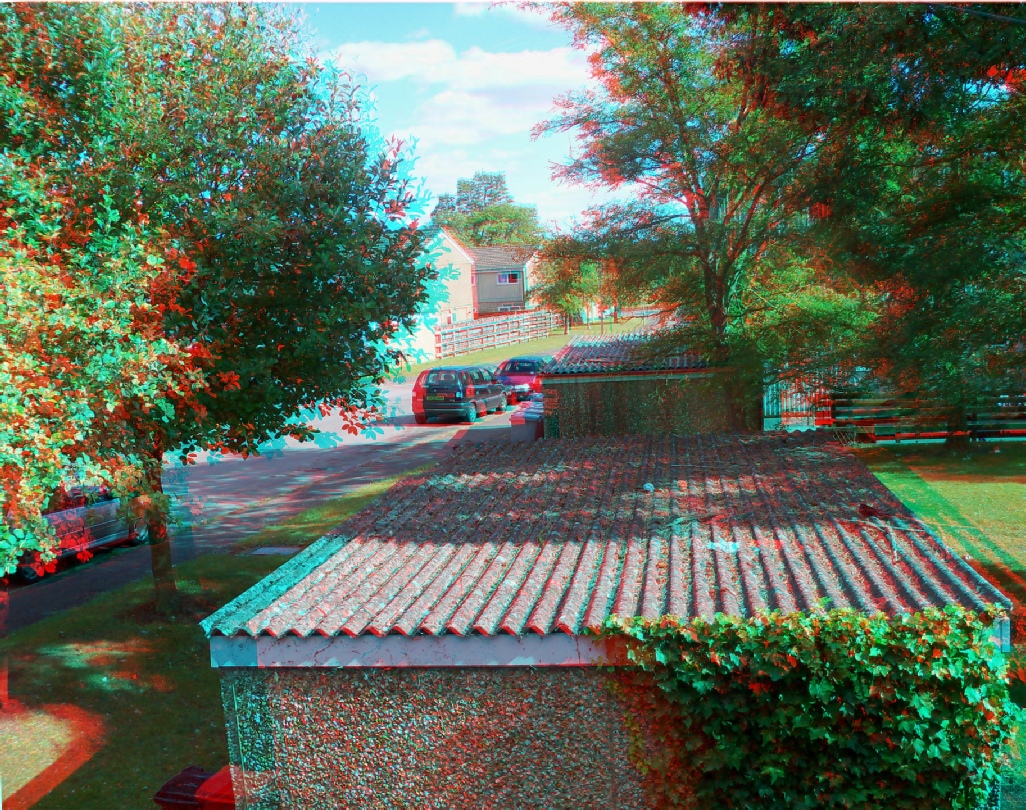

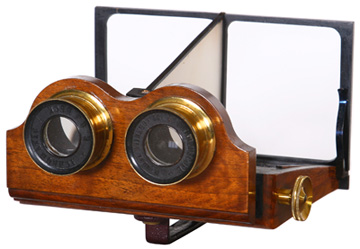

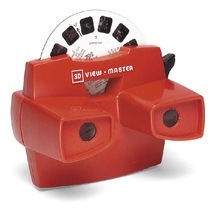
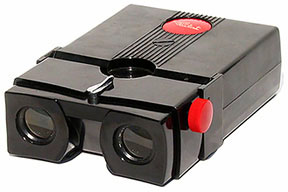
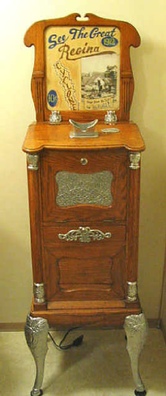
|
Scheme
|
Left eye
|
L
|
R
|
Right eye
|
Colour Rendering
|
Description
|
|
red-green
|
pure red
|
|
|
pure green
|
monochrome
|
The predecessor of red-cyan; ghosting on computer screens as the green filter lets
too much red through. Used for printed materials, e.g. books and comics.
|
|
red-blue
|
pure red
|
|
|
pure blue
|
monochrome
|
No ghosting on screens as there is no overlap between the colours the filters let
through. Often used for printed materials.
|
|
red-cyan
|
pure red
|
|
|
pure cyan (green+blue)
|
colour (poor reds, good greens)
|
Patent-free, limited colour perception, currently the most common in use; images
available in full version (red channel has only red colour) and half version (red
channel is a red-tinted grayscale image, yields worse colours but less retinal rivalry)
|
|
anachrome
|
dark red
|
|
|
cyan (green+blue+ so me red)
|
colour (poor reds)
|
a variant of red-cyan; left eye has dark red filter, right eye has a cyan filter
leaking some red; better colour perception, can show red hues better than red-cyan
|
|
mirachrome
|
dark red+lens
|
|
|
cyan (green+blue+ so me red)
|
colour (poor reds)
|
Same as anachrome, with addition of a weak positive correction lens on the red channel
to compensate for the chromatic aberration of eyes.
|
|
Trioscopic
|
pure green
|
|
|
pure magenta (red+blue)
|
colour (better reds, oranges and wider range of blues than red/cyan)
|
Same principle as red-cyan, somewhat newer. Less chromatic aberration, as the red
and blue in magenta balance well with green.
|
|
INFICOLOUR
|
complex magenta
|
|
|
complex green
|
colour (almost full and pleasant natural colours with excellent skin tones perception)
|
Developed by the TriOviz company, INFICOLOUR 3D is a newer, patent pending stereoscopic
system first demonstrated at International Broadcast Convention in 2007 and deployed
in 2010. It works with traditional 2D screens and TV sets (LCD, Plasma) and uses
glasses with brand new complex colour filters and dedicated image processing that
allows a natural colour perception with a pleasant 3D experience. When observed without
glasses only some slight doubling can be noticed in the background of the action
which allows watching the movie in 2D without the glasses. This is not possible with
traditional brute force anaglyphic systems.
|
|
ColourCode 3D
|
amber (red + green + neutral grey)
|
|
|
pure dark blue (+optional lens)
|
colour (almost full-colour perception)
|
(Also named yellow-blue, ochre-blue, or brown-blue) a newer system deployed in 2000s;
better colour rendering, but dark image, requires dark room or very bright image.
Left filter darkened to equalize the brightness received by both eyes as the sensitivity
to dark blue is poor. Older people may have problems perceiving the blue. Like in
the mirachrome system, the chromatic aberration can be compensated with a weak negative
correction lens (-0.7 diopter) over the right eye.] Works best in the RG colour space.
The weak perception of the blue image may allow watching the movie without glasses
and not seeing the disturbing double-image.
|
|
magenta-cyan
|
magenta (red+blue)
|
|
|
cyan (green+blue)
|
colour (better than red-cyan)
|
Experimental; similar to red-cyan, better colour rendering and less retinal rivalry.
Blue channel is blurred horizontally by the amount equal to the average parallax,
and visible to both eyes; the blurring prevents eyes from using the blue channel
to construct stereoscopic image and therefore prevents ghosting, while supplying
both eyes with colour information.
|
|
Infitec
|
white (Red 629 nm, Green 532 nm, Blue 446 nm)
|
|
|
white (Red 615 nm, Green 518 nm, Blue 432 nm)
|
colour (full colour)
|
Uses narrow-band interference filters, requires corresponding interference filters
for projectors, technical requirements comparable with polarization-based schemes.
Not usable with standard CRT, LCD, etc. displays.
|











